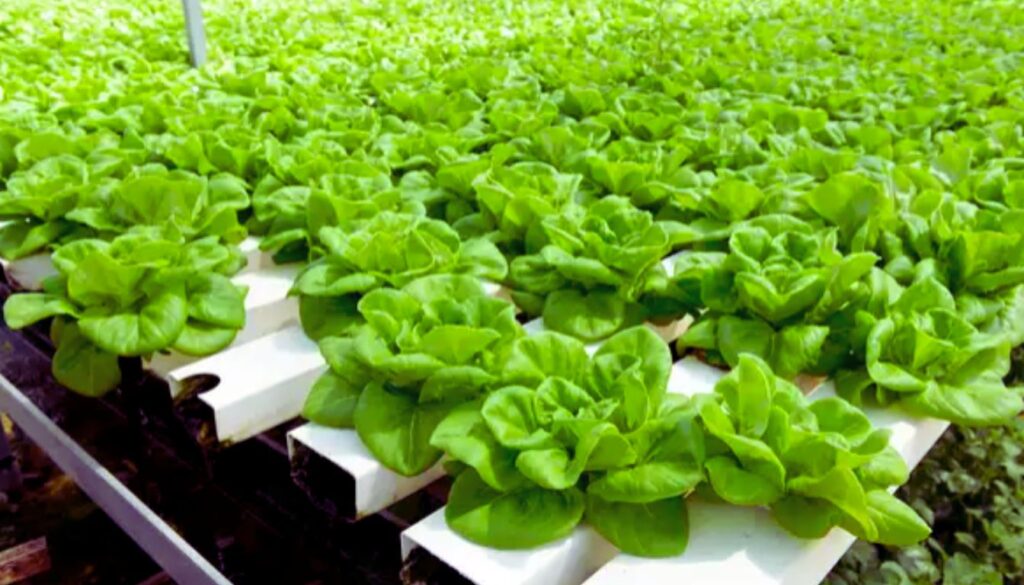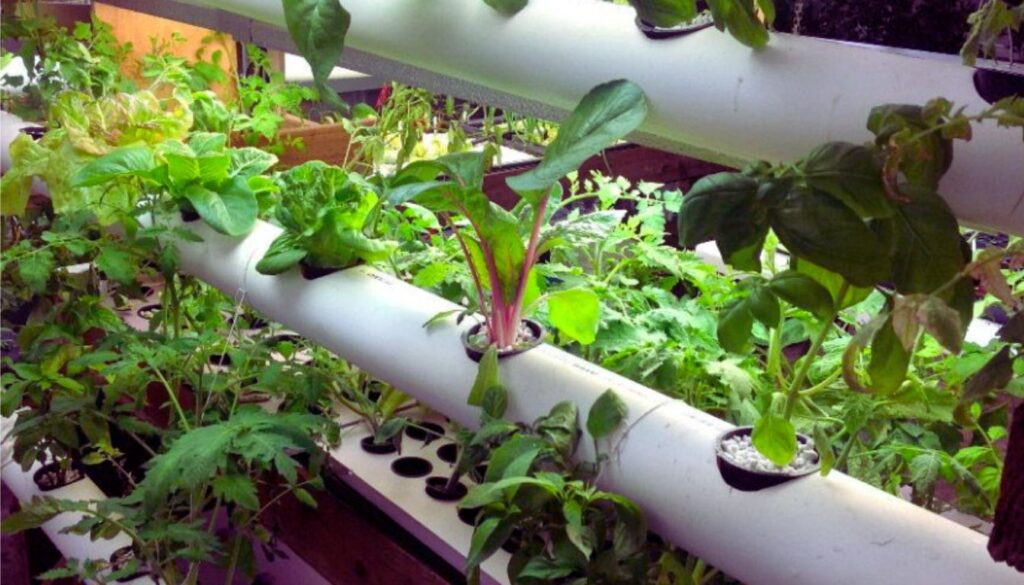Imagine growing your own fresh produce right at home without soil. That’s the magic of NFT hydroponics, a cutting-edge method that’s transforming how we think about gardening. With its efficient nutrient delivery system and minimal space requirements, NFT hydroponics makes it easier than ever to cultivate vibrant plants year-round.
Overview of NFT Hydroponics
NFT hydroponics, or nutrient film technique, uses a thin film of nutrient-rich water. This method provides essential elements to plant roots, promoting rapid growth. The design utilizes sloped channels, allowing water to flow continuously. This setup minimizes waste and maximizes efficiency, making it a favorite among hobbyists and professional growers.
Plants in NFT systems grow without soil, so I can cultivate a wide variety of crops. Leafy greens, herbs, and strawberries thrive in this environment. The technology adapts well to indoor and outdoor settings, providing flexibility in gardening. Plus, it reduces the risk of pests and diseases commonly found in soil-based systems.
In addition to space efficiency, NFT hydroponics requires less water than traditional gardening methods. A carefully designed system recycles water, conserving resources and lowering expenses. This eco-friendly approach aligns with my goal of sustainable living.
Maintaining an NFT setup involves monitoring nutrient levels, pH balance, and water temperature. Keeping a watchful eye on these aspects ensures healthy plants and abundant yields. The rewards of NFT hydroponics often exceed expectations, making it an exciting option for those eager to explore innovative gardening methods.
Benefits of NFT Hydroponics

NFT hydroponics offers numerous advantages for growers at all levels. This technique enhances productivity while being kind to the environment.
Increased Growth Rates
I notice that plants in NFT systems usually grow faster. The continuous flow of nutrient-rich water keeps roots perfectly nourished. This constant supply encourages strong and healthy plants. I’ve seen leafy greens reach full size in just a few weeks. It’s like a growth spurt on steroids, without the side effects!
Key Components of NFT Hydroponics Systems
NFT hydroponics relies on specific components that work together to create an efficient growing environment. Understanding these elements can enhance the success of any NFT system.
Nutrient Film Technique
The nutrient film technique circulates a thin film of nutrient-rich water over plant roots. This constant flow ensures roots receive the essential nutrients for growth. The design promotes oxygen absorption, making plants healthier. It’s like having a buffet, where roots feast on nutrients without being overwhelmed by water. Lowering water levels minimizes waste, so users save money and resources. Overall, this technique boosts plant growth speed, making it suited for various crops.
Materials Used
Materials in NFT hydroponics systems play a vital role in their efficiency and durability. Channels and trays usually consist of PVC or other waterproof materials for longevity. Grow lights often use LED technology for energy efficiency. Pumps must be reliable to maintain water flow without interruptions. I prefer using a good-quality timer to control the water cycles, ensuring optimal moisture. For plants, I choose net pots or foam cubes, which support roots while allowing for ample airflow. Each component contributes to the overall system, creating a thriving environment for plants.
Comparison with Other Hydroponic Methods

NFT hydroponics stands out among various hydroponic methods due to its unique approach to nutrient delivery. Unlike deep water culture, where plants float in oxygen-rich water, NFT uses a continuous film of nutrient solution. This difference allows roots to access both nutrients and oxygen effectively.
In contrast to aeroponics, where plants hang with roots misted in nutrient solution, NFT maintains a simpler structure. Aeroponics requires a fine mist, which can be tricky to manage. NFT, however, enjoys a steady nutrient flow that reduces the risks associated with misting malfunctions.
When compared to drip systems, NFT offers less equipment complexity. Drip systems deliver nutrients directly to plants, requiring regular maintenance and a more significant number of parts. NFT minimizes those needs while still providing efficient nutrient access.
The space efficiency of NFT impresses, especially when stacked vertically. Other methods often require more horizontal space. I can easily fit NFT setups in smaller areas, making them perfect for urban gardening or tight spaces.
Water use also varies among these methods. NFT recycles more water than traditional hydroponics, making it eco-friendlier. While I enjoy a low-maintenance watering routine, other systems might waste more water.
Lastly, NFT hydroponics shines in its speed of growth. Plants typically thrive in less time here than in conventional hydroponic systems. Growing leafy greens in just a few weeks feels like a bonus when I watch them flourish.
Overall, NFT hydroponics offers a compelling choice for anyone interested in gardening. It combines efficiency with simplicity, proving to be a fun alternative.
Challenges and Considerations
NFT hydroponics offers great advantages, but some challenges and considerations also arise. Understanding these aspects helps in successful gardening.
Maintenance and Monitoring
I check my NFT system regularly. This system requires consistent monitoring of nutrient levels, pH balance, and water temperature. Skipping these checks can lead to unhealthy plants. It’s important to keep nutrients well-balanced, so plants thrive. Adjusting pH levels can be as easy as adding a bit of acid or base, depending on the readings. I also make sure the pump runs smoothly; a malfunction can result in dry roots. Regularly inspecting for clogs in channels keeps water flowing as it should. If I don’t keep an eye on these details, my plants may not grow as impressively.
Environmental Factors
Environmental conditions play a crucial role. Factors like light, temperature, and humidity affect growth rates. I set up LED grow lights to ensure my plants get enough light without overheating. The ideal temperature for most crops ranges from 70 to 75 degrees Fahrenheit. Humidity also matters; too much moisture can invite mold and pests. Keeping airflow consistent helps maintain a balance. I often use small fans to circulate air and create a cozy environment. When conditions align, my plants flourish and showcase their color. Avoiding extremes prevents stress, ensuring a delightful harvest.
Before You Go – NFT Hydroponics
NFT hydroponics stands out as a game-changer for anyone looking to grow their own food efficiently. Its unique nutrient delivery system and space-saving design make it perfect for both novice gardeners and seasoned pros. I’ve found that with a little attention to detail and regular maintenance, the rewards can be truly impressive.
This method not only supports rapid plant growth but also promotes sustainability through water conservation. Whether you’re interested in cultivating herbs or leafy greens, NFT hydroponics offers an exciting opportunity to embrace innovative gardening. I encourage you to explore this method and experience the benefits for yourself. Happy growing! Don’t forget to add The Herb Prof to your favorites so you don’t miss out on future articles.
References – NFT Hydroponics
Little Herb Encyclopedia, by Jack Ritchason; N.D., Woodland Publishing Incorporated, 1995
The Ultimate Healing System, Course Manual, Copyright 1985, Don Lepore
Planetary Herbology, Michael Tierra, C.A., N.D., Lotus Press, 1988
Handbook of Medicinal Herbs, by James A. Duke, Pub. CRP Second Edition 2007
The Complete Medicinal Herbal, by Penelope Ody, Published by Dorling Kindersley
Check the Following Articles
Calathea Maranta: The Colorful Prayer Plant for Your Home
How to Grow Carrots from Seed: A Complete Guide
Sencha Green Tea Benefits for Health and Wellness
Plumosa Fern: Transform Your Home With This Plant
Frequently Asked Questions – NFT Hydroponics
What is NFT hydroponics?
NFT hydroponics, or nutrient film technique, is a soil-less gardening method that circulates a thin film of nutrient-rich water over plant roots. This promotes rapid growth by providing essential nutrients and oxygen while minimizing water waste.
What are the benefits of NFT hydroponics?
NFT hydroponics offers numerous benefits, including efficient nutrient delivery, minimal space requirements, faster plant growth, and reduced risks of pests and diseases. It is also more water-efficient and aligns with sustainable gardening practices.
What crops can be grown using NFT hydroponics?
You can grow a variety of crops using NFT hydroponics, including leafy greens, herbs, and strawberries. This method is versatile and can be adapted for both indoor and outdoor gardening.
How does NFT hydroponics compare to other hydroponic methods?
NFT hydroponics differs from methods like deep water culture and aeroponics in that it maintains a simpler structure with a consistent nutrient flow. It offers less equipment complexity, is easier to maintain, and can recycle water effectively.
What maintenance does NFT hydroponics require?
Maintaining an NFT system requires monitoring nutrient levels, pH balance, and water temperature. Regular checks help ensure healthy plant growth and prevent issues related to neglect in these areas.
Is NFT hydroponics suitable for beginners?
Yes, NFT hydroponics can be a great option for beginners. It offers an easier maintenance process compared to other hydroponic systems while still providing efficient nutrient access and quick plant growth.
Can NFT hydroponics be used indoors?
Absolutely! NFT hydroponics is ideal for indoor gardening, especially in small spaces. It allows year-round cultivation of plants while minimizing the risk of pests and diseases common in soil-based gardening.
What materials are essential for NFT hydroponics systems?
Key materials for NFT systems include PVC channels for nutrient flow, LED grows lights for energy efficiency, reliable pumps for consistent water flow, and net pots or foam cubes to support plant roots and improve airflow.

